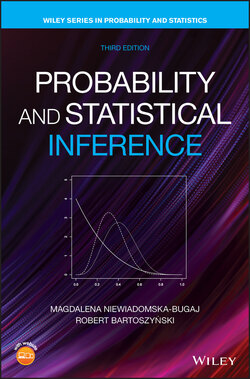Читать книгу Probability and Statistical Inference - Robert Bartoszynski - Страница 16
Example 1.1
ОглавлениеConsider an experiment consisting of two tosses of a regular die. An outcome is most naturally represented by a pair of numbers that turn up on the upper faces of the die so that they form a pair , with (see Table 1.1).
Table 1.1 Outcomes on a pair of dice.
| 1 | 2 | 3 | 4 | 5 | 6 | ||
| 1 | (1, 1) | (1, 2) | (1, 3) | (1, 4) | (1, 5) | (1, 6) | |
| 2 | (2, 1) | (2, 2) | (2, 3) | (2, 4) | (2, 5) | (2, 6) | |
| 3 | (3, 1) | (3, 2) | (3, 3) | (3, 4) | (3, 5) | (3, 6) | |
| 4 | (4, 1) | (4, 2) | (4, 3) | (4, 4) | (4, 5) | (4, 6) | |
| 5 | (5, 1) | (5, 2) | (5, 3) | (5, 4) | (5, 5) | (5, 6) | |
| 6 | (6, 1) | (6, 2) | (6, 3) | (6, 4) | (6, 5) | (6, 6) |
In the case of an experiment of tossing a die three times, the outcomes will be triplets , with , , and being integers between 1 and 6.
Since the outcome of an experiment is not known in advance, it is important to determine the set of all possible outcomes. This set, called the sample space, forms the conceptual framework for all further considerations of probability.
Definition 1.2.1 The sample space, denoted by , is the set of all outcomes of an experiment. The elements of the sample space are called elementary outcomes, or sample points.
